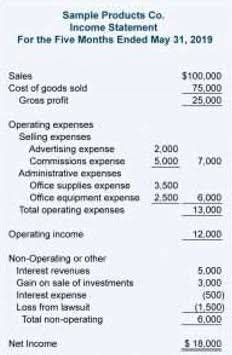
The predetermined overhead rate calculation shown in the example above is known as the single predetermined overhead rate or plant-wide overhead rate. This option is best if you’re unsure of how to calculate your predetermined overhead rate or if you don’t have the time to do it yourself. This option is best if you’re just starting out predetermined overhead rate formula and don’t have any historical data to work with. Again, this predetermined overhead rate can also be used to help the business owner estimate their margin on a product.

Examples of Overhead Rates
Predetermining is a process of working out the predetermined overhead rate by dividing the estimated amount of overhead by the estimated value of the base before actual production commences. However, estimating does not involve predicting or forecasting instead it only involves quantifying for an interval of time. Many accountants always ask about specific time which we need to do this, at what point in time is the predetermined overhead rate calculated.
Guide to Predetermined Overhead Rate Formula
Additionally, you should recalculate your predetermined overhead rate any time there is a significant change in your business, fixed assets such as the addition of new equipment or a change in your product line. This means that for every hour of work the marketing agency performs, it will incur $20 in overhead costs. Indirect costs are those that cannot be easily traced back to a specific product or service. For example, the office rent mentioned earlier can’t be directly linked to any one good or service produced by the business. Hence, the fish-selling businesses need to monitor the seasonal variations and adjust the cost pattern of the products. The use of predetermined overheads effectively incorporates the cost effects of seasonal variations in the product cost and price.
- Different businesses have different ways of costing; some use the single rate, others use multiple rates, and the rest use activity-based costing.
- To account for these changes in technology and production, many organizations today have adopted an overhead allocation method known as activity-based costing (ABC).
- Nonetheless, ignoring overhead costs, like utilities, rent, and administrative expenses that indirectly contribute to the production process of these gadgets, would result in underestimating the cost of each gadget.
- It is often difficult to assess precisely the amount of overhead costs that should be attributed to each production process.
- This project is going to be lucrative for both companies but after going over the terms and conditions of the bidding, it is stated that the bid would be based on the overhead rate.
What are some common methods of factory overhead absorption?
Predetermined overhead rates are important because they provide a way to allocate overhead costs to products or services. A predetermined overhead rate is used by businesses to absorb the indirect cost in the cost card of the business. Further, this rate is calculated by dividing budgeted overheads by the budgeted level of activity. One of the advantages of predetermined overhead rate is that it can help businesses monitor overhead rate. A business can calculate its actual costs periodically and then compare that to the predetermined overhead rate in order to monitor expenses throughout the year or see how on-target their original estimate was.
- Overhead for a particular division, product, or process is commonly linked to a specific allocation base.
- This allocation can come in the form of the traditional overhead allocation method or activity-based costing..
- On the other hand, if the actual cost is more, an adjusting entry is passed to record the remaining cost in the business’s income statement.
- Suppose following are the details regarding indirect expenses of the business.
Predetermined Overhead Rate (POHR): Formula and Calculation

On the other hand, the ABC system is more complex and requires extensive administrative work. It’s also important to note that budgeted figures in calculating overhead rates are used due to Bookkeeping for Chiropractors seasonal fluctuation/expected changes in the external environment. The business has to incur different types of expenses for the manufacturing of the products. These expenses include direct material, direct labour, direct overheads, and indirect overheads etc. The direct cost is easily allocated in the product cost as we need to allocate the quantity in line with the usage.
